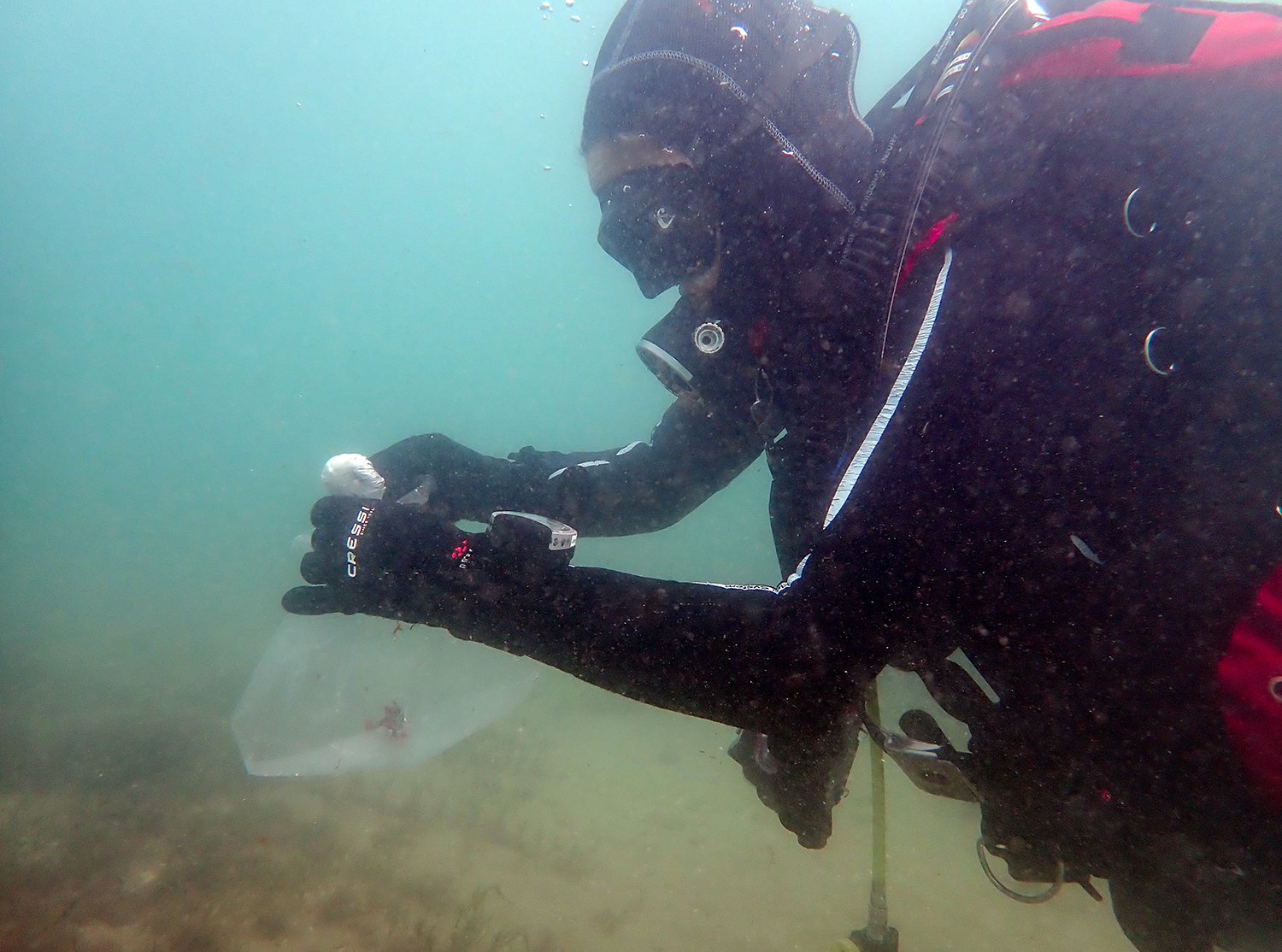
Red handfish have been returned to the wild, after scientists rescued them this summer to protect their fragile population from record high sea and atmospheric temperatures.
Scientists at the University of Tasmania’s Institute for Marine and Antarctic Studies (IMAS) collected 25 red handfish from the wild in January and cared for them in captivity. The team also set to work on habitat recovery, removing the native urchins that have overgrazed the seaweed and seagrass handfish rely on for their survival.
“Red handfish are facing many threats, and with their extremely limited population and a severely degraded habitat, we considered the additional threat of high temperature was a possible extinction risk,” said marine ecologist Dr Jemina Stuart-Smith, who co-leads the red handfish research and conservation program at IMAS.
 The rescue followed advice from an emergency workshop involving various stakeholders, hosted by the Australian Government’s Department of Climate Change, Energy, the Environment and Water (DCCEEW), with the support of the Tasmanian Government.
The rescue followed advice from an emergency workshop involving various stakeholders, hosted by the Australian Government’s Department of Climate Change, Energy, the Environment and Water (DCCEEW), with the support of the Tasmanian Government.
Dr Stuart-Smith said removing the handfish had been a difficult decision. “However, the site data shows the temperatures this summer exceeded previous known maximums.
 “We can only assume that this additional stressor would have impacted the already vulnerable population – so despite the risk, it appears to have been the right approach.”
“We can only assume that this additional stressor would have impacted the already vulnerable population – so despite the risk, it appears to have been the right approach.”
Dr Andrew Trotter, who leads the conservation breeding project for red handfish at IMAS, said the team were happy to be able to care for the fish over this time, but glad to see their return.
“They’re wild animals and belong in the sea,” Dr Trotter said.
“We returned 18 red handfish to the wild, keeping four fish to include in the captive breeding program at IMAS for at least this year, to help improve the genetic diversity of the population.
“Although we expected mortality in captivity, we were still disappointed to have three mortalities during this time. But this has highlighted the urgent need to better understand disease in this species.”
Dr Stuart-Smith said the impacts associated with climate change meant increasing flexibility was needed in conservation approaches. “This rescue effort has shown that we can rapidly implement adaptive management strategies for critically endangered species,” she said.
IMAS scientists plan to continue monitoring the red handfish in the wild, while the captive breeding program will allow the return of more individuals to wild populations in the future.
“We’re now focused on habitat restoration and management at red handfish sites which is crucial to the survival of the species.”
 IMAS red handfish population recovery research is funded by DCCEEW, with most of the broader project funding provided by the Foundation for Australia’s Most Endangered species and the generous donors who support the Handfish Conservation Project.
IMAS red handfish population recovery research is funded by DCCEEW, with most of the broader project funding provided by the Foundation for Australia’s Most Endangered species and the generous donors who support the Handfish Conservation Project.
This important work is carried out with support from Tasmania’s Seahorse World and in consultation with the National Handfish Recovery Team and the Department of Natural Resources and Environment Tasmania (NRE Tas).
FAST FACTS:
 Red handfish Thymichthys politus is a small critically endangered species of anglerfish, usually about 8cm long and varying in colour from bright red to light pink or brown.
Red handfish Thymichthys politus is a small critically endangered species of anglerfish, usually about 8cm long and varying in colour from bright red to light pink or brown.Images (from top):
Published 7 May 2024